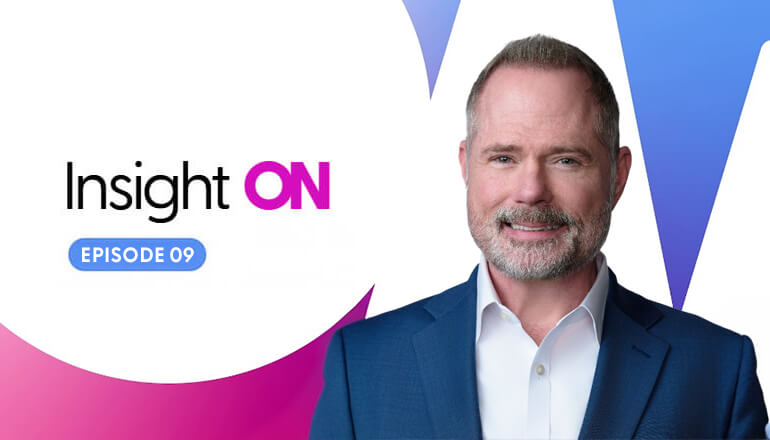Article How DaaS Elevates The Modern Workforce

By Insight UK / 9 Jan 2020 / Topics: Cloud Cybersecurity
Digitisation promises to make organisations more productive and efficient, but only if employees are able to use the technology they want.
The consumerisation of IT has transformed employee expectations, with the modern workforce now demanding to use the same technology they are familiar with in their personal lives and be able to work remotely, anytime, anywhere.
Research suggests 67% of workers wish they were able to work from home and 30% state they would choose flexible working over a pay rise if they were only able to choose one perk. Nearly half of people say technology is also a factor when choosing between prospective employers.
It’s not in a business’s interests to resist this change.
Forcing technology on a workforce can heighten disengagement and mean organisations will forfeit many of the promised benefits of digital transformation. Not to mention there is also a direct link between technology and staff attraction and retention.
Device-as-a-Service
Device-as-a-Service (DaaS) can help organisations adapt by offering a subscription-based approach to end user device needs such as PCs, tablets, smartphones and specialist equipment like Point of Sale (POS) terminals. Organisations pay on a per-user basis, with devices effectively deployed upon service terms to the customer and bundled with additional services such as device set up, lifecycle management services and recovery & refresh.
This subscription model has positive financial implications. The cost of a hardware refresh can be spread over an extended period of time, reducing capital expenditure and giving financial departments greater predictability. This delivers a true understanding of total cost of ownership (TCO) associated with end users at a per seat level.
There are also indirect benefits. Because DaaS providers take care of maintenance, IT departments have time to focus on innovation projects that drive genuine business change.
But the main advantage from an employee perspective is that they get a modern desktop and up-to-date hardware that they actually want to use. Staff are given a choice of devices that are pre-configured based on individual user profiles and therefore can be used straight away. The use of Mobile Device Management (MDM) ensures staff can use their device freely without compromising corporate data.
Asset lifecycles are tied to a technology’s optimum useful life, meaning staff never have to resort to using obsolete devices. Subscriptions can be tailored to ensure that certain departments and users receive new equipment more regularly than others.
For example, someone working predominantly with cloud and productivity applications will need a new PC less frequently than a video editor who might benefit from new features and more processing power. Similarly, only certain departments will need specific, specialised software. Identifying the right configuration for each user group minimises the risk of over licensing and boosts cost efficiencies.
Some DaaS providers, such as Insight, also offer predictive maintenance, preventing problems before they happen. This drives a proactive not reactive state to device and user efficiencies problem solving, prior to loss of functionality. In turn, this positively impacts the need to prolong insitu assets rather than the cost associated with replacing devices. This practical approach reduces the risk of hardware failure and performance degradation – factors that harm productivity and reduce employee satisfaction.
Analysts believe the DaaS market will grow by as much as 54.7% over the next three years and the findings of the 2019 Insight Intelligent Technology Index (ITI) suggest increased awareness of the need to meet changing employee expectations.
Seven in ten European IT decision makers (ITDMs) believe it is “very or extremely important” for corporate IT to resemble consumer-like experiences. Nearly 80% provide their employees with ready-to-go devices out of the box, while 75% offer self-service device selection. Evidence also suggests that organisations are increasingly turning towards Managed Service Providers (MSP) for assistance in achieving their Connected Workforce ambitions.
Insight can help organisations start their journey towards DaaS and an agile workforce with a Connected Workforce Discovery Workshop. This service helps organisations understand the need of individual business units or users to ensure the right blend of devices, applications and services – regardless of vendor or budget. Insight focus on ensuring the best possible outcome rather than adopting a one-size fits all approach.



